Carbon Neutral
Precise Consultants are delighted to announce that once again this year we are a certified carbon neutral business. Carbon neutral status is given to companies who calculate their carbon footprint and then offset it through supporting projects to remove CO²e from the atmosphere.
It has never been more important for businesses to step up and take account of the environmental impact associated with their operations and we are incredibly proud to lead the way in our industry by becoming a carbon neutral certified personnel agency. In even more exciting news, we are not just certified as carbon neutral, but have taken the extra step to go carbon negative. This means we have offset more carbon emissions than we have actually produced last year. If you would like to find out more about the projects we have supported through offsetting read on!

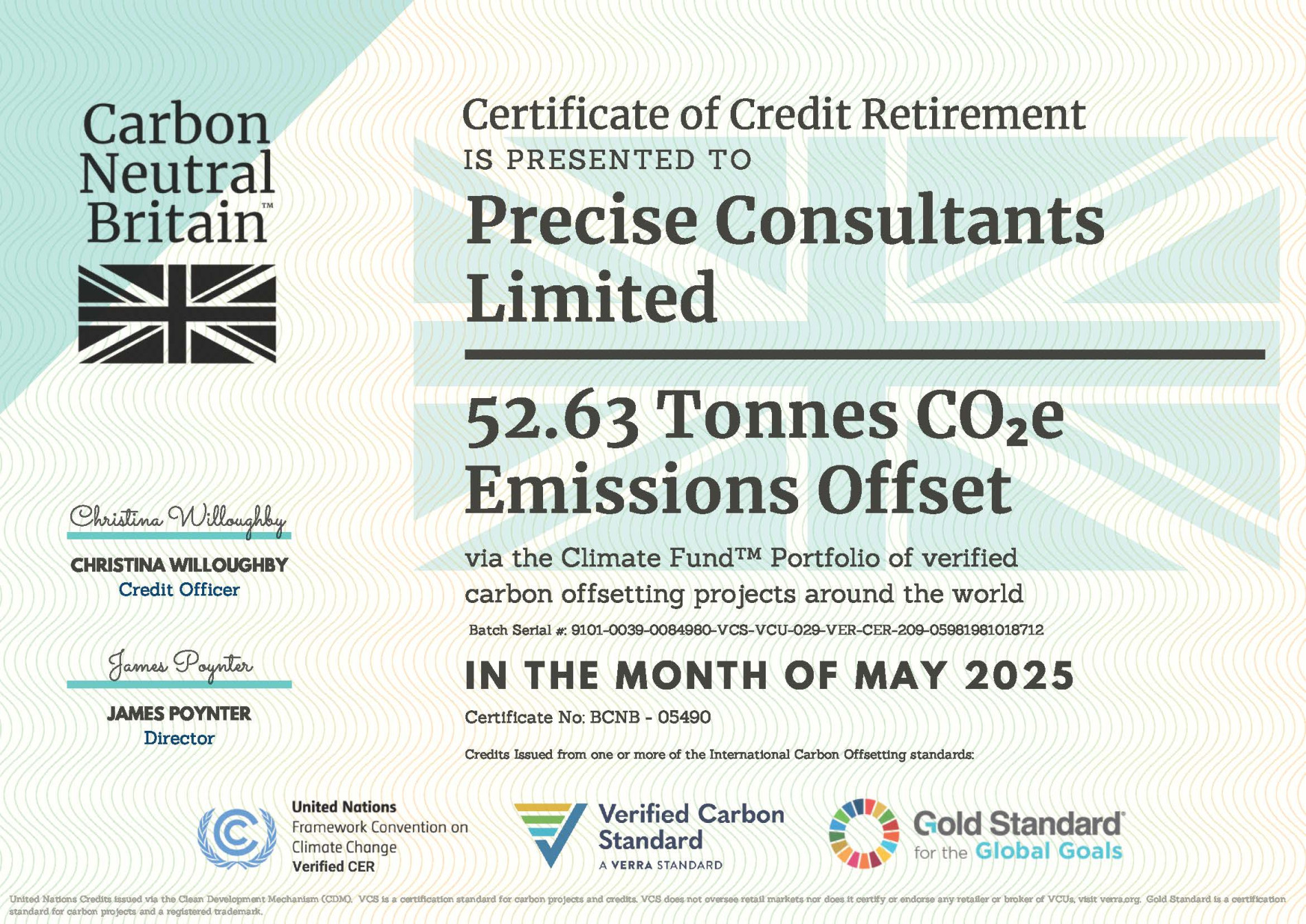
Through the Carbon Neutral Britain Climate Fund™, Precise Consultants has neutralised 52.63 tonnes of CO²e emissions through supporting 4 internationally certified carbon offsetting projects:
- Household Solar Lighting Project in Zambia
- Methane Capture and Power Generation Project in the Netherlands
- Salkhit Wind Farm Project in Mongolia
- Wind Power in Maharashtra Project in India
Certified via the Verra – Verified Carbon Standard (VCS), the Gold Standard – Voluntary Emission Reductions (VER), or the United Nations – Certified Emission Reductions (CER) programmes, the projects have also been selected based on their direct and indirect impact around the world – not just in offsetting, but also in supporting education, employment, and clean water, as well as having a net positive impact on the local wildlife and ecology.
HOUSEHOLD SOLAR LIGHTING PROJECT
This project plays a pivotal role in reducing poverty, enhancing educational opportunities, and improving family health by providing solar lighting devices to families within Zambia. By providing solar powered devices, the reliance on kerosene is reduced significantly, cutting down on the ongoing costs associated with fuel for the economically disadvantaged, as well as avoiding the associated emissions from fuel combustion that would have otherwise occurred in the home.
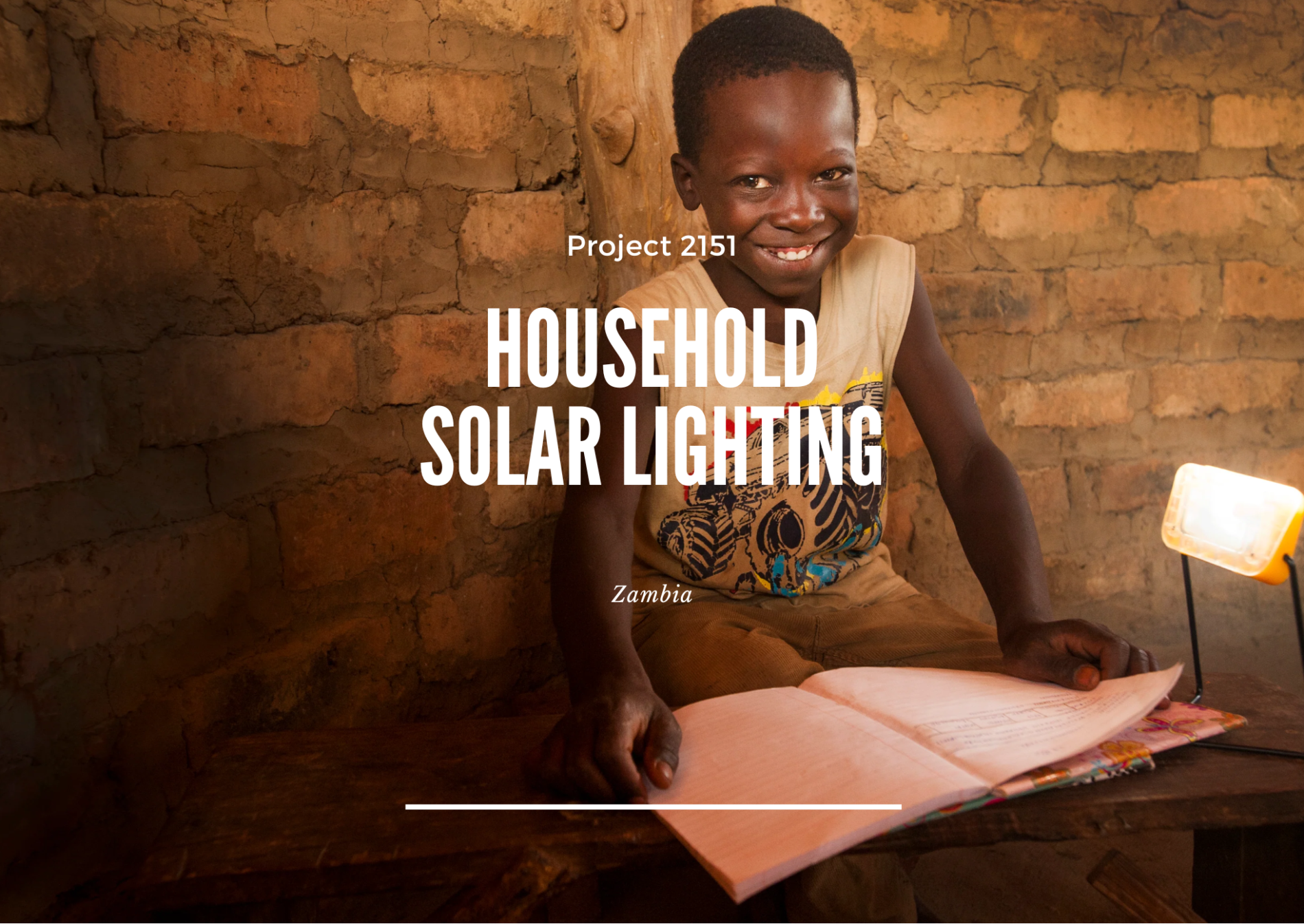

Since its inception in 2021, the initiative has successfully distributed over 600,000 solar lights across Zambia, and avoided over 10,000 tCO2e of emissions that would have otherwise been created.
Via the revenue generated from carbon credits, the distribution of lights have been able to be subsidised, removing the primary obstacle to the widespread adoption of clean technology among those who benefit most - its affordability. By channelling distribution through schools and community centres, the project ensures that children have access to bright, clean, and safe lighting for night-time reading and studying.
One of the first and most significant projects of its kind, preventing kerosene combustion, reducing household spending on lighting fuel and batteries, and extending children's study hours, this project aims to have a significant impact in breaking the poverty cycle within the region
METHANE CAPTURE AND POWER GENERATION PROJECT
This project showcases a prime example of circular and sustainable agriculture in the Netherlands. Located across the most southerly regions of the country, a collective of 30 Dutch farmers are able to capture methane from manure via biogas plants funded through offsetting climate finance. The project not only reduces emissions of this potent greenhouse gas through storage, but also avoids the use of fossil fuels and generates green electricity. As a fully circular process: residual heat is utilized, and the by-product after fermentation is then used as an alternative to chemical fertilizers for plant nutrition.


This project is one of Europe’s first and leading verified agricultural offsetting projects, involving 30 dairy and agro-pig farms in the Netherlands. By installing biogas systems, the farms are able to avoid disposing manure on local fields, to comply with governmentimposed nitrogen absorption limits. Funding through carbon offsetting ensures greenhouse gas reductions through the installation of biogas plants for these farmers.
One of the first in Europe, this project enables businesses to operate in an environmentally sustainable manner while demonstrating that both circular practices, and regulatory compliance, are possible. In 2025, approximately 70% of greenhouse gas emissions from Dutch agriculture come from livestock farming, primarily due to methane emissions from animal manure. Like CO2, methane is a greenhouse gas that contributes to global warming, but it is 28 times more potent, retaining significantly more heat. Via this project, manure is stored airtight as quickly as possible to prevent methane from entering the atmosphere, thus avoiding large greenhouse gas emissions.Via this project, once manure is stored in the biogas plants, a fermentation process is then used to generate electricity, which is fed into the Dutch national power grid, avoiding further fossil fuel combustion for power within the region.
The project is fully circular, connecting livestock farms, arable farming, food industry waste, and biogas production in a closed loop. The digestate (the residual product after fermentation) from the biogas plant is processed and sold as plant food to replace artificial fertilisers. At its core, the project supports sustainable milk production, with cattle feed primarily sourced from the farm's own land, while pigs are fed corn supplemented with suitable by-products from the beverage and food industries.
SALKHIT WIND FARM PROJECT
The Salkhit Wind Farm is the first grid-connected wind farm in Mongolia. The project generates renewable electricity using wind power resources and supplies it to the Mongolian central electricity system grid to meet the growing electricity demand.
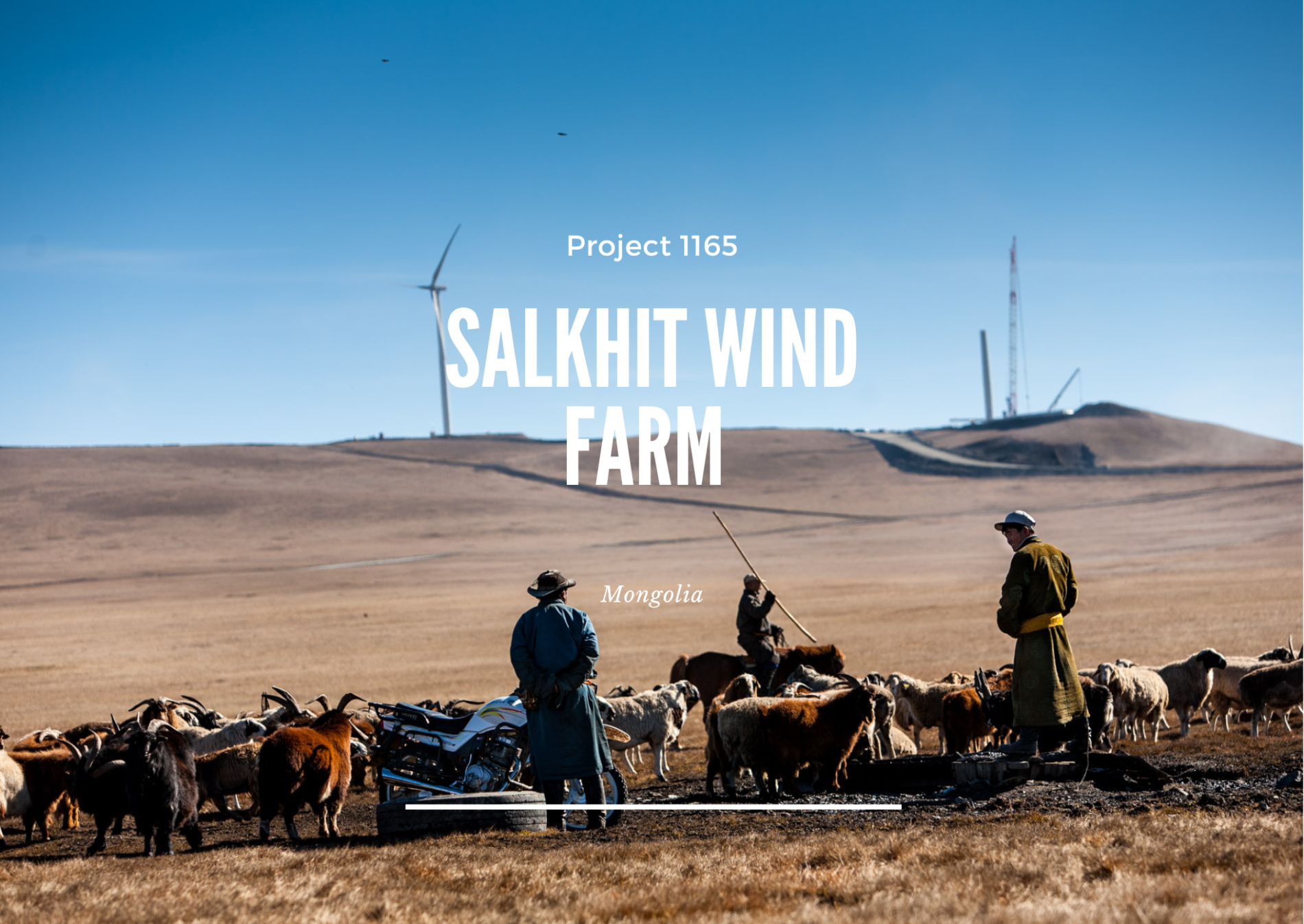

The project reduces greenhouse gas (CHG) emissions by avoiding COz emissions from electricity generation from fossil fuel power plants that are supplied to the Grid. The expected total annual net electricity generation of the Salkhit Wind Farm is 168.5 GWh with an annual emission reduction of 178,778 tonnes of COz equivalent (tCOze).
The specific goals of the Project are to:
Generate clean electricity, reduce HG emissions and contribute to the reduction of air pollutants by saving coal and water consumption compared to a business-as-usual scenario.
Introduce wind power in Mongolia and help to stimulate the implementation of other renewable energy sources being the first grid-connected renewable energy source.
Introduce private sector investment in the renewable energy sector and pave the path for future projects being the first independent power producer with private sector investment in the country.
Create local employment opportunities during project development, construction and operation phases and create local expertise for future projects.
WIND POWER IN MAHARASHTRA PROJECT
This project produces renewable electric power from 17, 1500kW capacity wind electric generators (WEGs), in a region where fossil fuels would have otherwise been burnt for energy. This project involves the construction, commissioning, and safe operation of a wind farm in the Indian state of Maharashtra, supplying the state electricity grid, which forms a part of the Western Regional Electricity Grid of India.
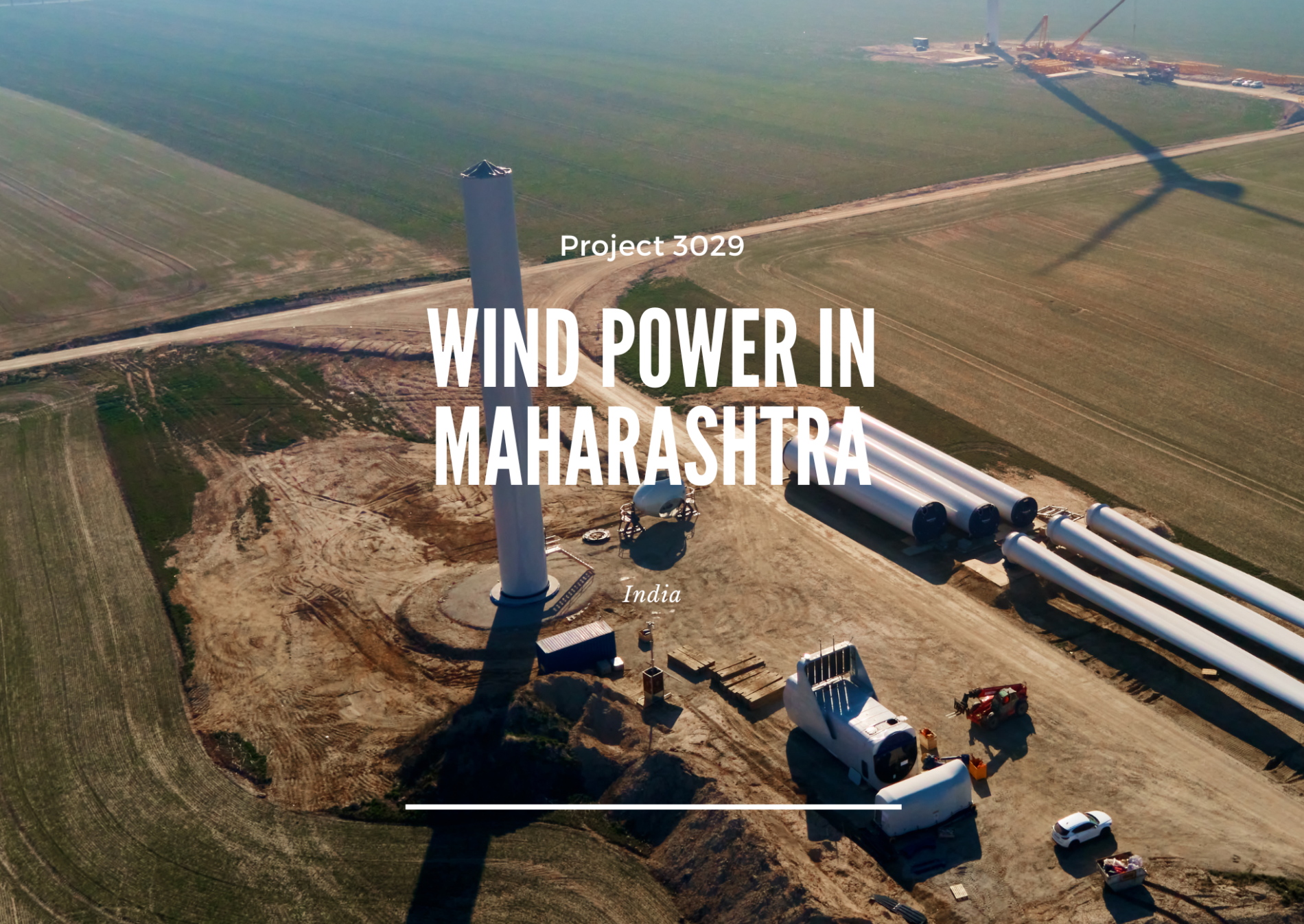
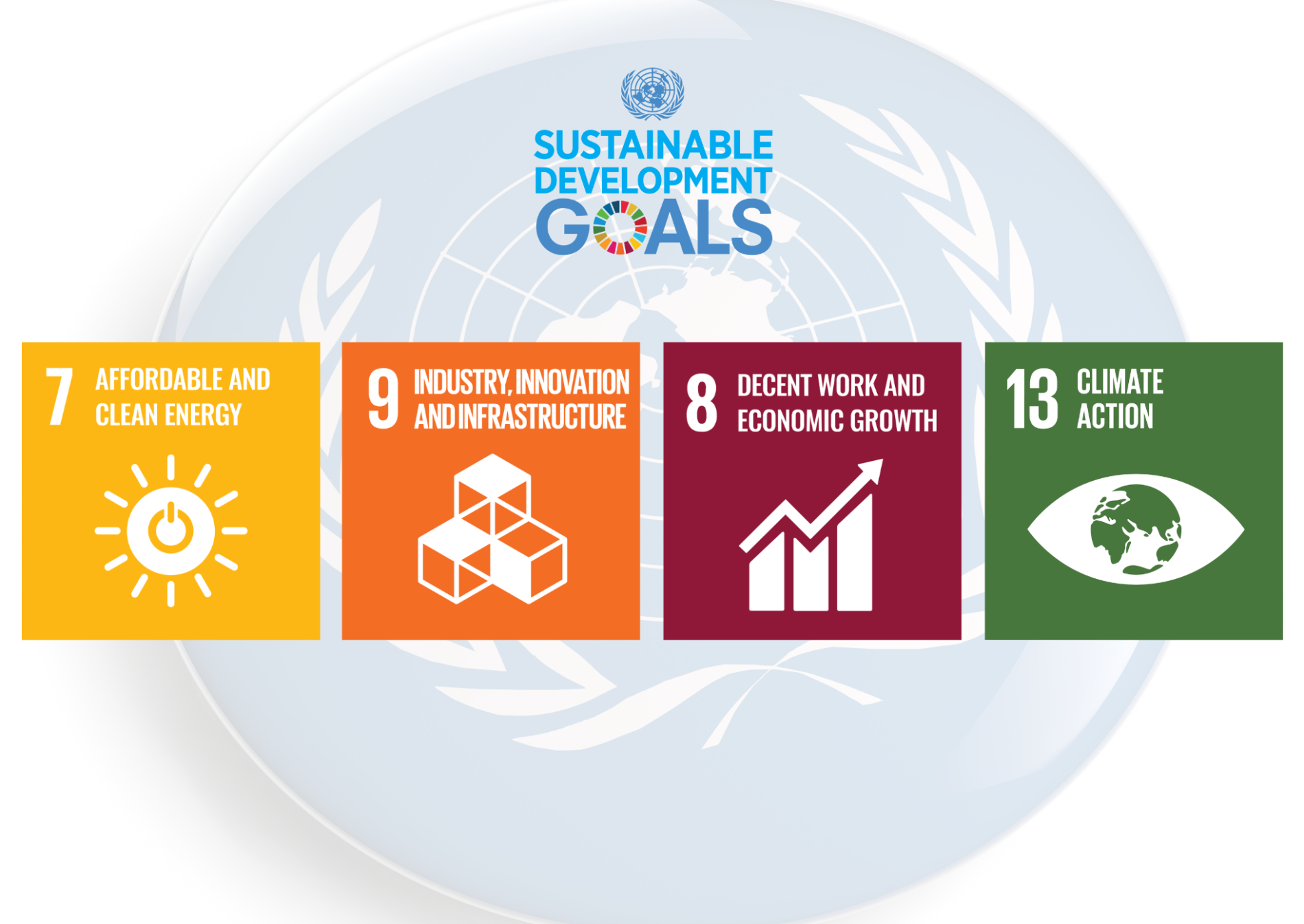
Carbon Neutral Britain Project 3029 - Wind Power in Maharashtra - is a 20 year project to install and operate 17 wind turbines in the Western region of India. The Project displaces non-renewable fossil fuel based electricity generation that would have otherwise been utilised within the region. The Project thereby leads to a reduction in the emission of GHGs associated with fossil fuel based electricity generation and enables sustainable economic and environmental development. The electricity generation from the project activity will contribute to Green House Gas (GHG) reductions calculated to be 48,590 tCO2e (tonnes of carbon dioxide equivalent) per year.
In addition to providing clean energy, the significant secondary benefits of the project are to provide Social, Environmental, Economic, and Technical benefits within the region.
At the local level, the project activity has led to the creation of an estimated 900 skilled and unskilled jobs throughout the construction and ongoing operation and maintenance of the project, along with secondary contracts and job opportunities in the development of the local road network and facilities. The technical benefits, with an increased interest in wind energy projects will further push R&D efforts by technology providers to develop more efficient and better machinery, encouraging further investment in the sector.
This project is a perfect example of how sustainable development can provide multiple benefits for the environment and the community.

